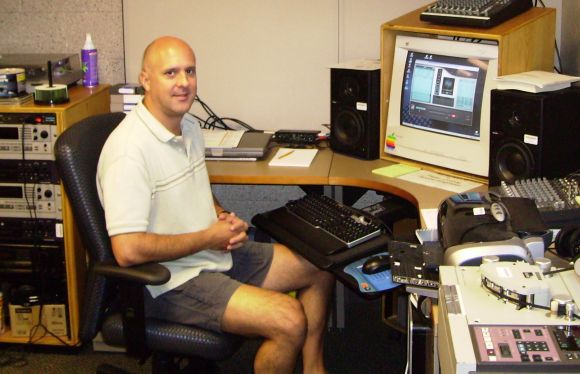Washington, 17. December 2007
QUADRIGA FOR U.S. Navy Band
Located in Washington D.C., the U.S. Navy Band has expanded its arsenal of equipment with the addition of a powerful Cube-Tec QUADRIGA / AudioCube system. The system was installed and commissioned by Cube-Tec's Thorsten Juettner at the U.S Navy Yard on the Anacostia River, and training was provided for Peter Czekaj, the primary system operator.. The Navy Yard has been designated a National Historical Landmark by the National Park Service and features the Navy Museum, the "home port" for Navy History. Over the course of the 3 day training session, much of the time was devoted to the design of combined digitization, restoration and CD burning workflows to best meet Peter's requirements
The U.S. Navy Band archive consists of about 3000 analog tapes in stereo and mono (5" (13cm) reels; 7" (18cm) reels; and 10" (27cm) reels) and approximately 250 DAT tapes.
The long term goal is to digitize all of the assests in the archive, some of which will be restored, so the QUADRIGA / AudioCube system is configured with several restoration tools as well. QUADRIGA provides quality controlled digitization from a variety of different players, and the captured material is catalogued, restored when necessary, and then transferred to CD.

Click to enlarge
Peter's QUADRIGA system includes an 9-Pin Import Module with AudioFile-Inspector as well as the BWF-Editor. The initial digitization is done at 24-bit / 96kHz for a high quality version that can be restored when required, and then 44.1kHz / 16-bit versions are automatically created for transfer to CD. The AudioCube portion of the system comes into play for the restoration process, for which Peter uses several of Cube-Tec's most powerful restoration VPI's, including Azimuth; DeBuZZ; DeCrackler; DeNoiser; RepairFilter; SpectralDeHiss Expert; and FreeFilter.
In addition to the QUADRIGA / AudioCube system, Peter is using a Sony APR-5000 and a Revox PR-99 for tape ingest, an Apogee "Mini-Me" A to D, an Apogee "Mini-Dac" D to A, and monitoring through a Mackie 1202 mixer and Dynaudio BM6a speakers.
Related Links:

